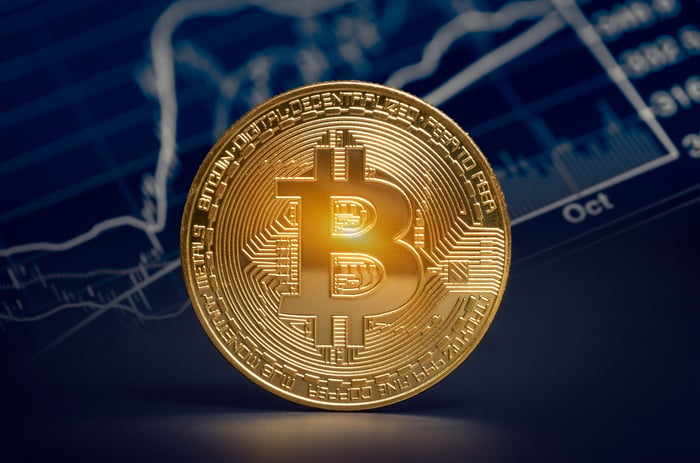For the past three months, Bitcoin (BTC -1.92%) has struggled to break out of a narrow trading range. Bitcoin has traded as low as $18,000 and as high as $25,000. With a recent surge over the past week, Bitcoin is now testing an important price level: $20,000.
The stakes are high. If Bitcoin fails to break out here, investors might assume that it will be locked into the same trading range for the rest of the year unless something changes dramatically. However, if Bitcoin surges above $20,000 and stays there, then this might be your last chance to buy the dip. You're not probably going to see Bitcoin at $18,000 again.
The correlation between stocks and cryptos
On Sept. 26, the S&P 500 fell to its lowest level of the year. Inflation concerns, recession fears, and Fed tightening have all weighed heavily on the stock market. But at the same time, Bitcoin is up more than 6% over the past week. The day after stocks fell, Bitcoin broke through the psychologically important $20,000 level.

Image source: Getty Images.
As a Bitcoin investor, this is exactly what you want to see. You want Bitcoin to rise even if stocks fall. In short, you want to see cryptos lose their recent correlation with stocks. Admittedly, it's a very small sample set. Still, the past week suggests that the crypto market and the stock market may finally be "decoupling" after an extended period this year in which they seemed to be highly correlated.
Bitcoin and Fed rate hikes
Until this year, the conventional thinking was that Bitcoin was "digital gold" and a hedge against inflation. Thus, even if inflation appeared in the U.S. economy and the Fed had to tighten, it wouldn't make a big dent in the price of Bitcoin. Just as investors flock to precious metals such as gold during inflationary periods, they would flock to "digital gold" as well, right?
So it spooked crypto investors this year when that didn't happen. Inflation cast a shadow over the U.S. economy and the Fed had to tighten its lending policies, and crypto fell just like every traditional asset. Crypto investors became Fed watchers, mesmerized by every new rate hike. With each round of inflation-fighting updates, crypto weakened even further. The whole investment thesis around Bitcoin seemed to be collapsing.
That's why the recent breakout from Bitcoin is so promising. It comes after a 75 basis point tightening from the Fed. The stock market tanked, but crypto did not. This is not to say that Bitcoin is rallying on news of the Fed rate hike. But it certainly is not getting hit as hard as stocks. If you think of crypto as a separate asset class, then investors are going to compare the crypto asset class against others, to see which one holds up best against a flurry of Fed rate hikes. If Bitcoin holds the line now, that could lead to new flows of investor money into crypto.
Bitcoin bulls are buying
Even more encouragingly, some big-name Bitcoin investors are putting their money where their mouths are. The best example here is legendary Bitcoin bull, Michael Saylor. It's easy to discount what he says in interviews because you can assume that he is trying to boost the price of Bitcoin. On Sept. 20, though, he revealed that his firm, MicroStrategy, has been steadily accumulating Bitcoin over the past few months. In an official SEC filing, MicroStrategy disclosed that it had purchased 301 Bitcoins at an average price of $19,851. For the sake of argument, let's call it $20,000.
All of this leads me to think that now is the time to buy Bitcoin at $20,000. Cryptos are starting to lose their recent correlation with stocks. Fed rate hikes are seemingly already priced into the crypto market, and cryptos are not being hit as hard as the equity markets. And big-time Bitcoin whales are buying. So it might be too late if you're not buying the dip when Bitcoin trades at $20,000.





